69 posts
• Page 1 of 3 • 1, 2, 3
Is Malacath an Evil Daedra?
-

Sami Blackburn - Posts: 3306
- Joined: Tue Jun 20, 2006 7:56 am
Anyways no, he never really was totally evil.
-

Ymani Hood - Posts: 3514
- Joined: Fri Oct 26, 2007 3:22 am
The thing with Malacath is that he is of a very extreme possessive nature. He puts his followers on a Pedestal and makes them untouchable, but those who do not follow him ought to find their head decapitated. Also if one of his followers take harm he can be very vindictive and will take action personally on it. Be cautious on which Orc you put your sword to, he may be one of his followers 
So yeah for his followers : Heroic.
For non-followers : Evil / Beastly / Neutral
So yeah for his followers : Heroic.
For non-followers : Evil / Beastly / Neutral
-
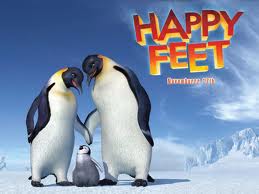
Steven Nicholson - Posts: 3468
- Joined: Mon Jun 18, 2007 1:24 pm
I don't think Malacath is absolutely and purely evil, when compared to princes like Mehrunes and Molag Bal... he's just brutal and appreciates only physical strength.
-
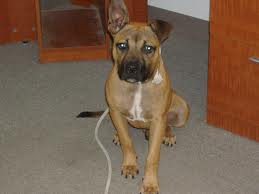
Ross Zombie - Posts: 3328
- Joined: Wed Jul 11, 2007 5:40 pm
No Daedra is 'evil', just as no Aedra is 'good'.
Malacath is a special case.
He used to be Trinimac, god of an early Aldmer triber. Boethiah tricked him into entering Boethiah's mouth so he could speak with Trinimac's voice.
Boethiah swallowed him.
When he had.. passed he had become Malacath, and his followers Orsimer.
Malacath is a special case.
He used to be Trinimac, god of an early Aldmer triber. Boethiah tricked him into entering Boethiah's mouth so he could speak with Trinimac's voice.
Boethiah swallowed him.
When he had.. passed he had become Malacath, and his followers Orsimer.
-

Tania Bunic - Posts: 3392
- Joined: Sun Jun 18, 2006 9:26 am
There are no "evil" daedra. they represent an aspect of real life. Everyone has a piece of a daedra in them. Everyone has a destructive side, a bit of insanity, a fondness of the thrill of a hunt, etc.
The daedra have no concern for Morals. It's all about mortal repesentation. If you look into it, Azura, considered as the most "good" daedra by most, is actually quite nasty. Probably one of the worst.
Edit: :ninja: 'd
The daedra have no concern for Morals. It's all about mortal repesentation. If you look into it, Azura, considered as the most "good" daedra by most, is actually quite nasty. Probably one of the worst.
Edit: :ninja: 'd
-
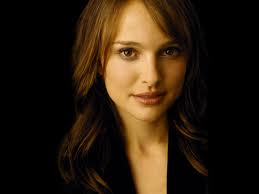
Adam Kriner - Posts: 3448
- Joined: Mon Aug 06, 2007 2:30 am
No Daedra is 'evil'
Mehrunes Dagon would like to talk to you.
-
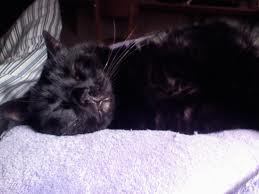
Chris Ellis - Posts: 3447
- Joined: Thu Jul 26, 2007 10:00 am
Mehrunes Dagon would like to talk to you.
Dagon is not evil, he is cursed.
He just wants to jump again.
http://www.imperial-library.info/content/seven-fights-aldudagga
If anyone could be considered evil from a mortal point of view, it might be Molag Bal.
Though forceful domination has its positive sides in TES lore as well, 'reaching heaven by violence', forcing your way to a higher plane of existence, is described by Vehk as a great act of love.
-

Philip Rua - Posts: 3348
- Joined: Sun May 06, 2007 11:53 am
Isn't there something in there about Molag Bal chowing down on Malacath before he became Malacath? That story always confused me.. :bonk:
Also Azura, even though she cursed the chimer making them all into the Dunmer, she isn't considered as evil as the others either. Sanguine also I don't believe to be as evil. He's just more a rockin dude. :rock:
I think all the provinces in Tamriel have different beliefs on who's the more evil though. Sheogorath was considered one of the most evil in Morrowind for example.
EDIT: Think I have some of my lore bum backwards there. Need to lay off the mead.
Also Azura, even though she cursed the chimer making them all into the Dunmer, she isn't considered as evil as the others either. Sanguine also I don't believe to be as evil. He's just more a rockin dude. :rock:
I think all the provinces in Tamriel have different beliefs on who's the more evil though. Sheogorath was considered one of the most evil in Morrowind for example.
EDIT: Think I have some of my lore bum backwards there. Need to lay off the mead.
-

james tait - Posts: 3385
- Joined: Fri Jun 22, 2007 6:26 pm
Dagon is not evil, he is cursed.
He just wants to jump again.
http://www.imperial-library.info/content/seven-fights-aldudagga
He just wants to jump again.
http://www.imperial-library.info/content/seven-fights-aldudagga
Mhm.
Also, why is ambition and revolution considered "evil" now? Destruction is also often required for those two to come to light.
It's just like real life. Someone does something bad, we tend to ignore the good they do.
-
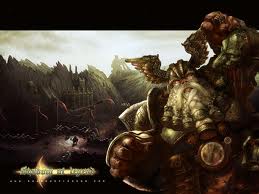
Makenna Nomad - Posts: 3391
- Joined: Tue Aug 29, 2006 10:05 pm
There are no "evil" daedra. they represent an aspect of real life. Everyone has a piece of a daedra in them. Everyone has a destructive side, a bit of insanity, a fondness of the thrill of a hunt, etc.
The daedra have no concern for Morals. It's all about mortal repesentation. If you look into it, Azura, considered as the most "good" daedra by most, is actually quite nasty. Probably one of the worst.
Edit: :ninja: 'd
The daedra have no concern for Morals. It's all about mortal repesentation. If you look into it, Azura, considered as the most "good" daedra by most, is actually quite nasty. Probably one of the worst.
Edit: :ninja: 'd
Yet, they are still "Evil". Just because something's "Human" doesn't make it not evil. Daedra are the monsterous, pure essence of everything wrong with people.
Molag Baal is easily the worst, followed by Mephala and Boethia in no particular order (... Aren't those the three revered by the Dunmer?)
Hircine, Dagon, and Sheogorath are also evil, though not quite to the same extent as the above three due to qualities that mitigate their "scourges".
Namira and Malacath are evil to everyone that lie outside their selected demographic, but great to their followers - Very Homicidal Lobbyists, in essence.
Azura seems to be the opposite of the above: Neutral or benefical to most, but a complete [censored] to those who decide to worship and honor her (Look at the Dunmer)
Peryite is villainous, but doesn't become quite evil because he's so incompetant. (I think that's his "real" sphere, rather than "order, pestilence, etc"...)
I'm not sure what Meridia is.
-

WTW - Posts: 3313
- Joined: Wed May 30, 2007 7:48 pm
He's a bit brutal. Not evil, just unappreciative of fine china, flower arranging etc.
-

barbara belmonte - Posts: 3528
- Joined: Fri Apr 06, 2007 6:12 pm
Well what about Jyggalagg?
I mean, Malacath is more popular at partys!
And Malacath is NOT popular at partys!
I mean, Malacath is more popular at partys!
And Malacath is NOT popular at partys!
-

Siobhan Wallis-McRobert - Posts: 3449
- Joined: Fri Dec 08, 2006 4:09 pm
All I know is that he is not popular at parties.
Nice reff
-

Kat Stewart - Posts: 3355
- Joined: Sun Feb 04, 2007 12:30 am
I'm not sure what Meridia is.
Meridia is the closest thing to a "good" daedra as exists. Her sphere is life, and she generally hates anything "unnatural." So generally good, unless you're a Necromancer.
-
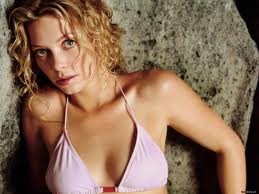
Jerry Jr. Ortiz - Posts: 3457
- Joined: Fri Nov 23, 2007 12:39 pm
Malacath is a patron for the...lets say uglier and powerful races orcs ogres trolls. Hes always protective of his followers but he values raw power over anything, which is why you can gain his favor in skyrim regardless of your race.
-
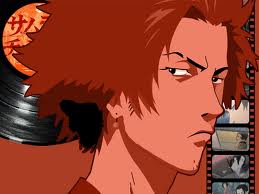
Robert - Posts: 3394
- Joined: Sun Sep 02, 2007 5:58 am
Yet, they are still "Evil". Just because something's "Human" doesn't make it not evil. Daedra are the monsterous, pure essence of everything wrong with people.
Molag Baal is easily the worst, followed by Mephala and Boethia in no particular order (... Aren't those the three revered by the Dunmer?)
Hircine, Dagon, and Sheogorath are also evil, though not quite to the same extent as the above three due to qualities that mitigate their "scourges".
Namira and Malacath are evil to everyone that lie outside their selected demographic, but great to their followers - Very Homicidal Lobbyists, in essence.
Azura seems to be the opposite of the above: Neutral or benefical to most, but a complete [censored] to those who decide to worship and honor her (Look at the Dunmer)
Peryite is villainous, but doesn't become quite evil because he's so incompetant. (I think that's his "real" sphere, rather than "order, pestilence, etc"...)
I'm not sure what Meridia is.
Molag Baal is easily the worst, followed by Mephala and Boethia in no particular order (... Aren't those the three revered by the Dunmer?)
Hircine, Dagon, and Sheogorath are also evil, though not quite to the same extent as the above three due to qualities that mitigate their "scourges".
Namira and Malacath are evil to everyone that lie outside their selected demographic, but great to their followers - Very Homicidal Lobbyists, in essence.
Azura seems to be the opposite of the above: Neutral or benefical to most, but a complete [censored] to those who decide to worship and honor her (Look at the Dunmer)
Peryite is villainous, but doesn't become quite evil because he's so incompetant. (I think that's his "real" sphere, rather than "order, pestilence, etc"...)
I'm not sure what Meridia is.
For something to be evil, it needs to be able to come from the same reference point as humanity.
The Et'Ada are far bigger than mortality and their actions cannot be described as good or evil.
It does not fit their frame of reference, since they do not belong to a mortal society, they are not on the same level and you cannot judge them as you would a neighbour.
They can be described as (seemingly) beneficial or destructive.
Molag Bal is right through might, domination and defilement. He is not evil, though mortals that go outside of the bounds of society to pursue their own desires alone may be described as such.
His sphere may encompass positive outcomes, such as Vehk showed by reaching heaven through violence. Taking the divinity the gods will not share, for love of his people.
Dagon is change through destruction. He can no more be described as evil as an earthquake can.
Sometimes the stagnant needs to be eradicated for a new path to bloom.
Hircine is the hunter, he is a basic trait of humanity, prosperity through skill.
Hircine does not just hunt, whenever a goal is relentlessly pursued, that is Hircine.
Sheogorath is madness, but madness can be kind, a blessing. Madness can keep the horrible facts of reality at bay.
Madness is essential to the arts and philosophy. The jester has its place by showing the wise a funhouse mirror version of themselves.
Namira's sphere is obscured to mortals. She is unknown and unknowable, inconceivable. A concept that does not fit inside a human mind.
The unknown dark may be terrifying, but hardly evil.
Malacath is honor through pride. He is the outcast, the ostracized, the defiled.
Malacath shows that there can be strength outside of accepted society and that not to belong does not mean having to give up.
Azura is the Prince of Dawn and Dusk. Like the other Daedra she is not evil in itself, though she is seemingly vainglorious, petty and vengeful.
The mistress of the half-light is good at seeming.
Peryite is the cleansing fever. Purification through fire and ordeal. Order, all things in their place and at their time.
Meridia is the wayward Solar daughter. Banished from Aetherius for consorting with illicit spirits. She has built herself the Oblivion realm of the coloured rooms, presumingly a pale reflection of her former home. She hates the undead with a passion, possibly because of those illicit spirits.
Her sphere is life, and fall from grace.
Then there is Jyggalag, who is order. But other than Peryite he is a cold, clinical, efficient order.
Where Peryite is fluid, organic, alive, Jyggalag is sterile, uncaring.
Clavicus Vile is power through pact. He comes closest to a western view of the devil, collecting souls in exchange for favours.
Im sure Im missing out some, like the Aedra and Ebonheart but you get the idea.
All of these concepts and notions have their place in a society, and none of them are good or evil in and of themselves.
How the concepts are applied by mortals is what makes it ultimately moral or amoral, judged by the framework of their own society.
-
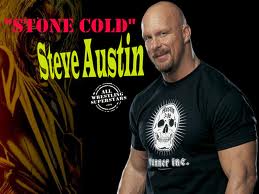
Farrah Lee - Posts: 3488
- Joined: Fri Aug 17, 2007 10:32 pm
Malacath is not exactly a true Daedra anyways. He is a digested divine being called Trinimac that was worshiped almost as much as Auri-El in Aldmeri culture, i.e. basically he became holy [censored]... Boethia apparently can digest god-beings and poop them out into cursed divine beings...especially when they get in the way of the exodus of an entire people who are going to worship him and some of his 'pals?'
-

Nienna garcia - Posts: 3407
- Joined: Wed Apr 25, 2007 3:23 am
i think the belief that God works in mysterious ways apply to Et'Ada.
So Et'Ada work in mysterious ways. can't say its good or evil
That works?
So Et'Ada work in mysterious ways. can't say its good or evil
That works?
-

Eddie Howe - Posts: 3448
- Joined: Sat Jun 30, 2007 6:06 am
Sanguine sounds like a fun guy to party with.
-

joannARRGH - Posts: 3431
- Joined: Mon Mar 05, 2007 6:09 am
You have 0 memory of what Happened....no no that guy is Evil incarnate. so much fun and not a drop of memory to dedicate to it...just alot of angry people.
-
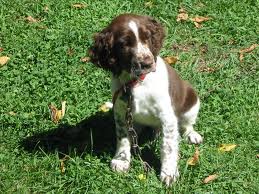
Marie Maillos - Posts: 3403
- Joined: Wed Mar 21, 2007 4:39 pm
So somebody resurrected the topic?Lol...to not get off topic...
We can see gods as beings like daedras too,just because Akatosh saved the world from Mehrunes doesn't mean he is good.He was just keeping up mehrunes punishymant...
We can see gods as beings like daedras too,just because Akatosh saved the world from Mehrunes doesn't mean he is good.He was just keeping up mehrunes punishymant...
-
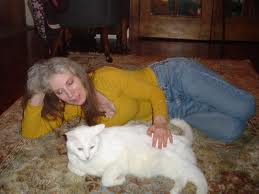
daniel royle - Posts: 3439
- Joined: Thu May 17, 2007 8:44 am
Evil is very subjective in all cases, but for Daedra has there positive and negative aspects to each action they take. Consider Boethia who created Malacath from Trinimac, he represents assassination, treason, and unlawful overthrows of government. Most can call these acts evil but the Chimer felt they were to be honored because it was through his ways that the broke off from the Aldmer and became an independent group who had finally gained the right to choose for themselves. They gained the right to worship Daedra, live how they desired, and generally stop trying to tear apart Nirn to become astral beings. Now take a look at the Thalmer for instance, they had a legal overthrow of power which many would have considered good if under different circumstances. What they did fell under the sphere of Mehrunes Dagon which was change through destruction, but if a unlawful rebellion took place amongst the Thalmer would you consider it evil when the people are oppressed? Because if it took place then it would fall under Boethiah's ideals so if he helps set it in motion would that be an evil act on his part? Sure his reason behind it would probably be because he likes to see war and all types of combat in general, but could you call it evil or just an attempt at entertainment? Just because lives are lost does not mean that good was not done even under the negative circumstances of war and rebellion, true it can't be said in all situations but just because something can be viewed as bad by some doesn't mean it is entirely wrong.
-

Strawberry - Posts: 3446
- Joined: Thu Jul 05, 2007 11:08 am
69 posts
• Page 1 of 3 • 1, 2, 3
